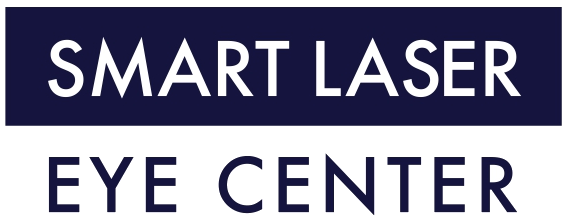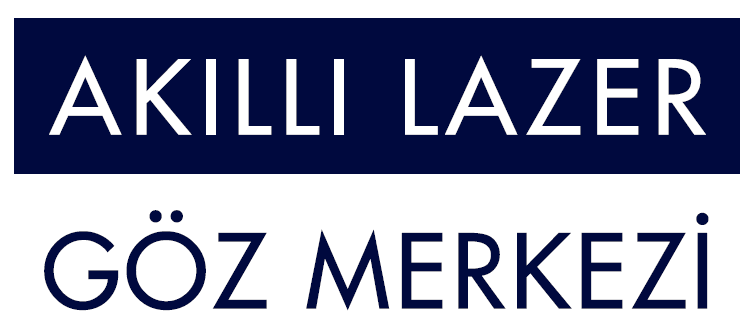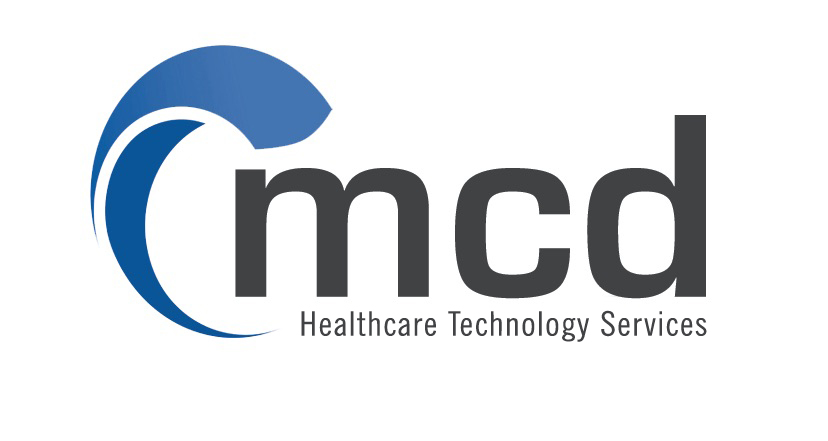Home »
Blepharoplasty Eyelid Surgery
Blepharoplasty Eyelids Deformities and Correction Surgery
Eyelid Aesthetic Surgery (blepharoplasty) is cosmetic surgery to remove excess skin or fat from the Upper and Lower eyelids. The goal is to heal deformed or drooping eyelids or eye bags. An eyelid lift or blepharoplasty is a procedure to add or remove oil from your skin and eyelids. The term “eyelid lift” is a misnomer because the eyelid is not fully lifting during surgery.
Especially Upper eyelid blepharoplasty focuses on the area between the eyebrows and eyelashes. On the other hand Lower eyelid blepharoplasty focuses on the area between the eyelashes and cheek. In essence, a blepharoplasty procedure is about removing excess skin and muscle from these areas and reducing or repositioning the underlying fat to a younger configuration.
For what reasons should you have blepharoplasty?
Blepharoplasty can be apply for a variety of reasons. A ‘tired’ appearance is the most common reason why patients opt for blepharoplasty eyelid surgery. The heaviness of the eyelids and under-eye bags always give a tired appearance.
In some patients, the appearance of the eyelids may be asymmetrical and blepharoplasty may be performed to correct the symmetry.
In some people, droopy upper eyelid skin may obstruct the field of vision. Therefore you may not be able to see your side view fully. Additionally, blepharoplasty is performing to remove this obstruction and improve vision.
How is upper eyelid blepharoplasty surgery performed?
Especially, Upper eyelid blepharoplasty surgery uses incisions to allow skin and fat to be remove. A thin suture is then used to bring the skin together to create an eyelid crease.
How is lower eyelid blepharoplasty surgery performed?
In lower eyelid surgery, skin incisions just below the lash line or an incision on the inside of the eyelid called the transconjunctival approach make it perfect for patients who need to remove or add fat. Also this approach can be combine with laser resurfacing of the eyelid skin to reduce lines and wrinkles.
Why should blepharoplasty surgery be done?
Blepharoplasty can be done for a variety of reasons.
‘Tired’ looking eyes
Especially, a ‘tired’ appearance is the most common reason why patients opt for blepharoplasty eyelid surgery. The heaviness of the eyelids and under-eye bags always give a tired appearance.
Asymmetrical look
In some patients, the appearance of the eyelids may be asymmetrical and blepharoplasty may be perform to correct the symmetry.
Saggy or Droopy Appearance
In some people, droopy upper eyelid skin may obstruct the field of vision. Therefore you may not be able to see your side view fully. Especially blepharoplasty is perform to remove this obstruction and improve vision.
Due to Aging
Especially, as we age, the eyelid skin often shows the earliest signs of aging because the elastic fibers in the skin tissues are lost. This is resulting in loss of elasticity and the appearance of sagging skin. As the skin ages, the lower eye muscle loses its tone and relaxes with excess muscle mass.
The most important factor is the forward movement of fat from the eye socket. This fat is normally retain by the orbital septum. Which weakens over time and then allows the fat to come forward. Also causing prominent bulges on the inside of the upper eyelids as well as the lower eyelid bags.
Middle face
Another important aging effect is the downward sagging of the middle face. A young lower eyelid shares a harmonious contour with the cheek. The aging lid usually separates from the cheek as the mid face droops and makes us look older.
Also, a youthful face is plump-looking, which fades with age, causing lines and dimples and sometimes a frail appearance. While these are all natural aging changes, they are accelerated by smoking, sun exposure, and hereditary factors.
Thyroid Eye Disease
Additionally, there are various disfiguring conditions such as Thyroid Eye Disease. Therefore require blepharoplasty eyelid surgery to restore the natural appearance of the eyes. Very successful results can obtain with this type of surgery.
How do aging related changes occur around the eyes?
Aging related changes
Especially, as we age, the eyelid skin often shows the earliest signs of aging because the elastic fibers in the skin tissues are lost. This is resulting in loss of elasticity and the appearance of sagging skin. As the skin ages, the underlying orbicularis oculi muscle also loses its tone and relaxes with excess muscle mass.
The most important aggravating factor is the forward movement of fat from the eye socket. This fat is normally retain by the orbital septum. Which weakens over time and then allows the fat to herniate forward. Additionally, this is causing prominent bulges on the inside of the upper eyelids as well as the lower eyelid bags.
Mid Face
Another important aging change is the lowering of the mid face. A young lower eyelid shares a harmonious contour with the cheek. Especially aging eyelid often separates from the cheek as the midface descends, making us look older.
Also, a youthful face is full of volume, which fades with age, causing lines and dimples and sometimes a frail appearance. While these are all natural aging changes, they are accelerated by smoking, sun exposure, and hereditary factors.
At What Age Should You Have Blepharoplasty?
Eyelid surgery is usually apply in the late 30s or later when signs of aging appear. However, it is a matter of preference as there is no age requirement for blepharoplasty.
Also surgery can be apply in the early 20s if there is a real underlying problem. Many patients with lower lid bags will have eyelid surgery at this age.
How Is Blepharoplasty Surgery Performed?
There are two different types of blepharoplasty:
Upper eyelid blepharoplasty and lower eyelid blepharoplasty. The way the surgery is perform depends on the type. However performing any type of lower and upper eyelid surgery requires expertise.
Upper lid blepharoplasty:
Also known as upper eyelid surgery, is a fast healing procedure. The blepharoplasty incision need to be measure and mark. The procedure is then continue to remove excess skin, underlying muscle and fat. If there is pre-existing upper eyelid dimpling, these tissues can be reposition to fill in the gaps. As a result this is giving the eyelid a pleasant and youthful appearance and improving the appearance of the eyelid visually. After the desired amount of excision is complete, hidden dissolving sutures are use to close the skin surface.
Lower eyelid blepharoplasty
Also known as lower eyelid surgery, is a more complex procedure that requires an incision that goes from below the lash line beyond the corner of the eye. Excess skin, muscle, and fat can then be remove or reposition through this incision. Especially in young patients, the main aesthetic problem is the underlying fat swelling. In these cases, a transconjunctival, ‘traceless’ approach from the inside of the eyelid must be prefer.
Especially skin closure must be complete by using removable stitches or adhesive. Which means that sometimes stitches do not need to be remove. Our expert eye surgeon will advise you on which method is most suitable for you.
What Kind of Anesthesia Is Used?
Anesthesia
Upper lid blepharoplasty surgery is mostly performing under local anesthesia with or without sedation. Lower eyelid blepharoplasty is usually performing under local anesthesia with sedation. Unless patient prefers under general anesthesia.
When performing both lower and upper eyelid aesthetics, our preference is local anesthesia with sedation. However, if the patient wishes, this procedure can also be perform under general anesthesia.
Lower Eyelid
Before and after
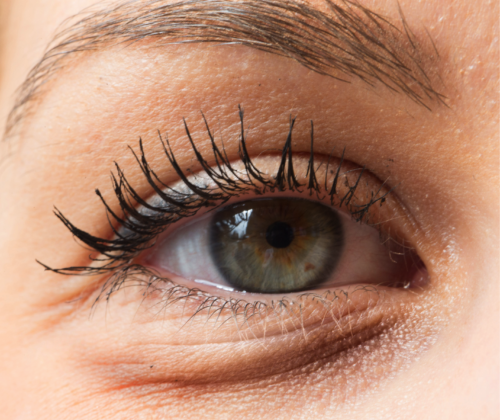
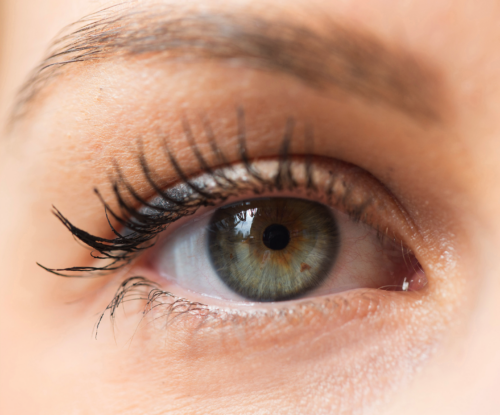
Move the bar left and right
Upper and Lower Eyelid
Before and after
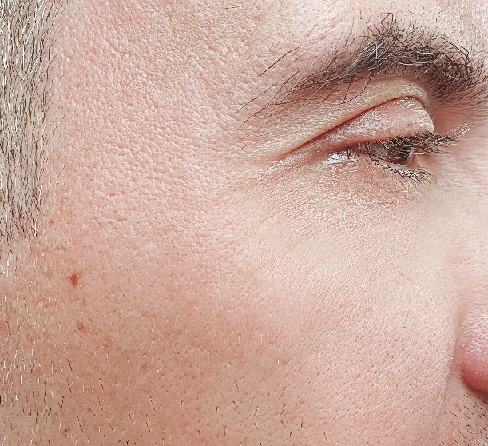
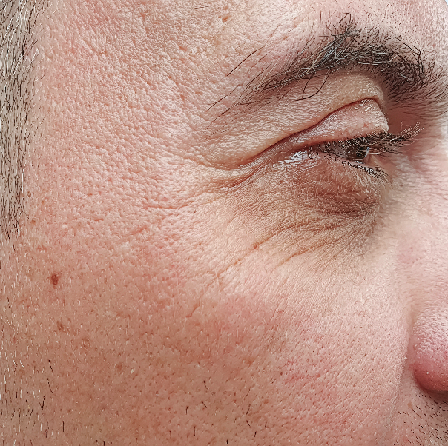
Move the bar left and right
Upper and Lower Eyelid
Before and after
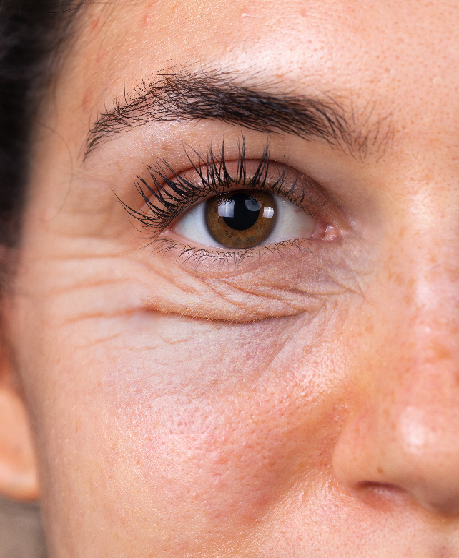
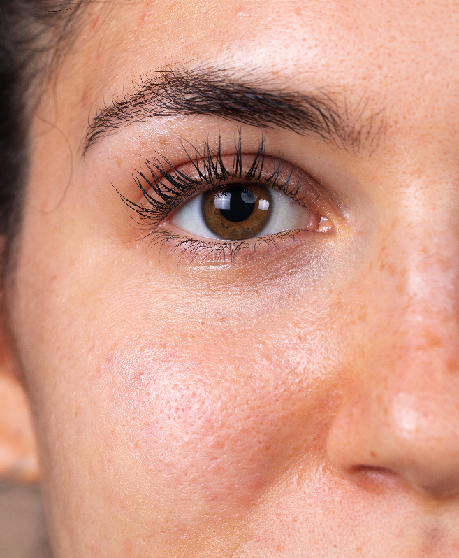
Move the bar left and right
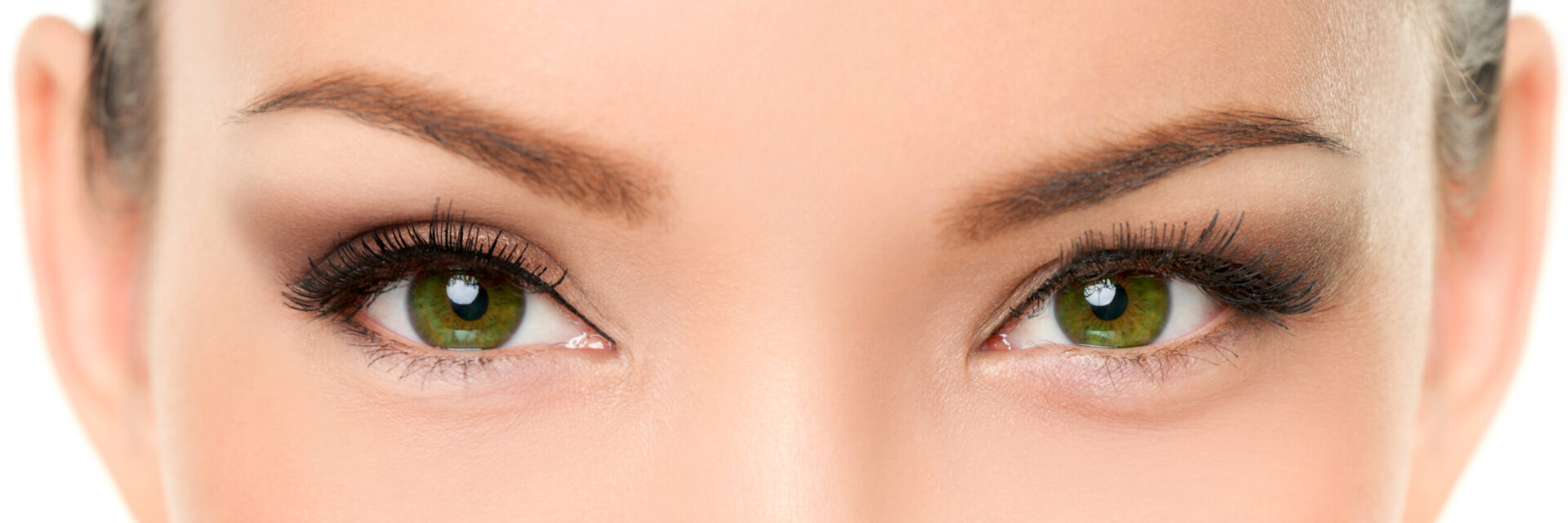
Almond Eye Surgery – Lower lid shaping
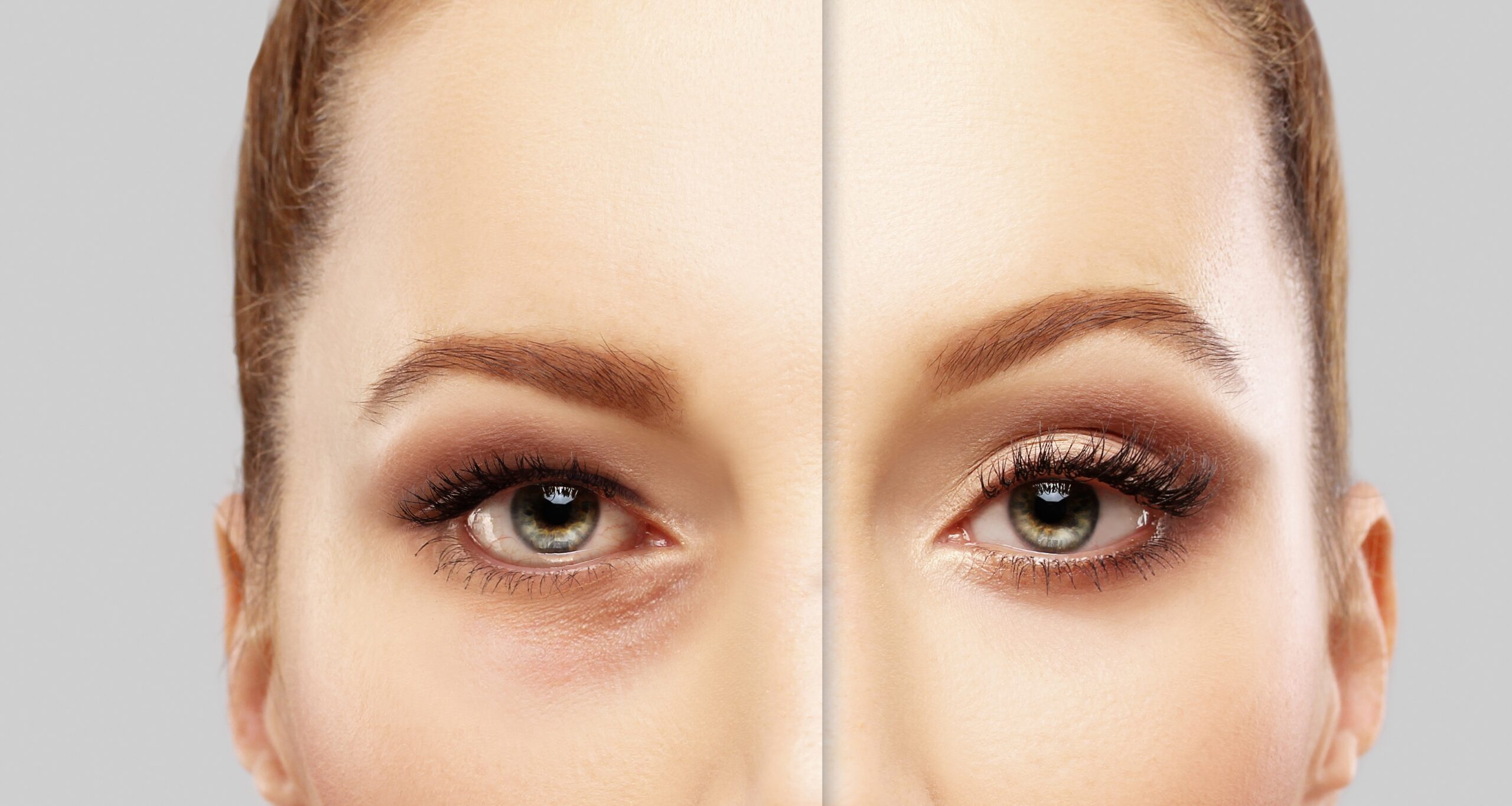
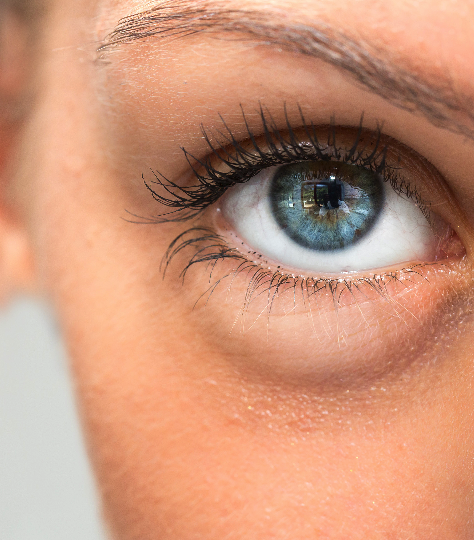
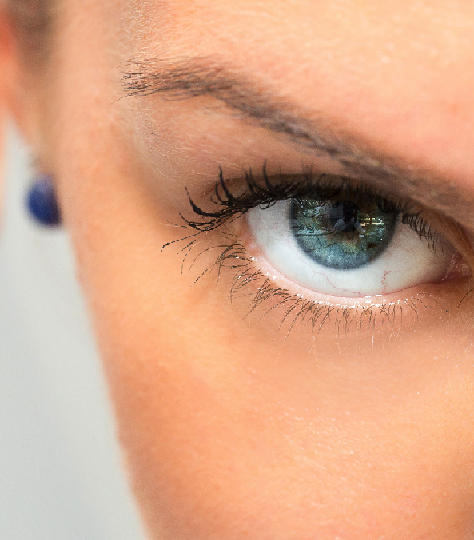
Move the bar left and right
What is Almond Eye Surgery?
Especially Almond Eye Surgery is a procedure to correct the sagging of the lower lid contour. Which is common in many individuals and can cause sad and tired feeling. This procedure is a special form of blepharoplasty and must be perform by a expert Oculoplastic Eye Surgeon.
Almond-shaped eyes are characterize by a slightly raised outer corner. Or canthus and a lower eyelid that sits on the lower edge of the iris. Many people naturally have this eye shape due to ethnicity or genetics, while others may have a completely different shape.
What is the psychological effect of the surgery?
Appearance can have a positive psychological impact on eyes. In particularly, play an important role in perceive attractiveness and communication. It is known that in some cultures and ethnic groups around the world, certain eye shapes are considering an indicator of beauty. For this reason, some people may wish to have almond eye surgery to achieve a more attractive or less tired looking eye shape.
While there is wide variability in the contours of the eyelids resulting in a multitude of different eye shapes. As a result, this is only partially due to the nature of the eyelids. Eye shapes are usually determine by the shape of the mid face. Especially the depth of the eye sockets and more importantly the size of the eyeballs.
Why is Almond Eye Surgery Performed?
Conventional blepharoplasty:
Especially conventional blepharoplasty is effective in reducing excess tissue but cannot correct changes in the shape of the valve lines. Almond Eye Surgery focuses on changing the shape of the eye rather than reducing the skin and eye bags. The procedure therefore appeals to those seeking specialist aesthetic treatments that are particularly applicable to younger patients.
Various eyelid shape parameters can be modified using established treatments such as:
- Ptosis correction to raise the upper lid position in people with droopy eyelids.
- Canthoplasty used to lengthen the eyelid in selected cases.
- Levator recession to lower the upper lid and reduce the height of the palpebral fissure.
However, one of the most difficult problems to treat is lower lid droop. Which usually requires lower lid elevation and changes in canthal tilt. Almond eye surgery therefore represents another step in the ongoing evolution of cosmetic eyelid surgery and can be perform effectively and safely.
What Causes Lower Lid Sagging?
Lower lid drooping and retraction:
Especially, there are many causes of lower lid drooping and retraction. Which can be disease-related or simply structural. Pathological causes include various conditions affecting the skin such as dermatitis, burns, and skin tumors.
Also, in the specialized practice of Oculoplastic Eye Surgeon. There is a significant number of patients with retraction after blepharoplasty – a complication up to 20% in some studies. Thyroid eye disease and other inflammatory orbital conditions can also cause it.
Patients with lower lid sagging:
Most patients with lower lid droop are typically seen in the context of myopia (commonly known as myopia). Myopic eyes are larger in diameter and tend to protrude forward in what is describe as a “negative vector” eye configuration. In these settings, the bottom covers have less support and often appear to droop. It is also associate with canthal dystopia (drooping of the outer corner of the eye). Which can lead to a lethargic or sad appearance.
How is Almond Eye Surgery Performed?
Almond eye surgery and correction of lower lid sagging:
Almond eye surgery and correction of lower lid droop require complex procedures with a very narrow margin of error. Such procedures should only be performe by highly skilled Oculoplastic Eye Surgeon who will do meticulous planning and eye examination. The eyelid is a complex multilayered structure. Therefore, as with all eyelid surgeries, this procedure requires a detailed biomicroscopic evaluation of the ocular surface before proceeding.
Is Almond Eye Surgery performed under local or general anesthesia?
Almond Eye Surgery is performing under local or general anesthesia.
This procedure consists of three critical parts:
- Lower lid septo-retractor retraction.
- Mucograft implantation.
- Lateral canthoplasty.
The precise details of the surgery are complex. Also, essentially the surgery is performing from the inside of the eyelid, leaving no visible scars. With the conjunctival incision, the natural retractor bands within the eyelid releases itself. Accordingly, a spacer graft is sutured to elevate the eyelid and prevent retractor reattachment. A canthoplasty procedure resets the lateral canthal position to provide more support to the eyelid. Therefore improves canthal curvature (the angle between the medial and lateral canthal).
Additionally, Mucograft is widely use in tooth reconstruction. It is a versatile component that provides full integration into the inner eyelid. This lower eyelid procedure represents a new application for this material.
For which patients it may not be suitable?
If patients have skin and muscle distress (anterior lamella), this procedure is less likely to work. Also, as lower eyelid lift in the context of skin deficiency is more complex. Therefore, requires mid face elevation and is not usually recommending as the primary aesthetic procedure.
Does Almond Eye Surgery Leave Scars?
Scarring is rarely a problem since almond eye surgery is complete through incisions made from the inside of the eyelid.
Is Almond Eye Surgery Safe?
Yes, almond eye surgery is safe blepharoplasty surgery. It is a very delicate procedure that can be even more complex in patients who have had previous eyelid surgery or have protruding eyes. So it is very important to consult a specialist oculoplastic eye surgeon.
What Happens During Post-Surgical Recovery?
Recovery
Recovery after Almond Eye Surgery is usually between 2-3 weeks. Patients will be able to go home after the procedure but should get plenty of rest and refrain from strenuous activity for the first couple of weeks. It is common to notice some bruising and swelling for 7-10 days.
For some patients, recovery may be longer as they can experience chemosis (also known as conjunctival oedema). Which is a type of swelling/inflammation of the eye, particularly prevalent in myopic patients.
After surgery
Until the mucograft integrates into the lower lid tissues, it maintains a hard and roughened surface. Bandage contact lenses are using in the meantime to allow for comfort. And along with prophylactic antibiotics to reduce pain and swelling.
Although patients can return to work and resume normal activities after 2-3 weeks, complete healing can take several months.
What are the Results of Almond Eye Surgery?
When performed by an experienced surgeon, the results of almond eye surgery are natural and long-lasting. Especially avoiding any drastic changes to the eyes or facial appearance. As such, most patients are happy with the outcome of the surgery.
Typically, the elevation of the lateral and central parts of the eye can be as much as 2-3mm. Although this seems like a small amount, the normal palpebral aperture is between 8-9mm, which means the change after surgery represents a remarkable improvement.
What Causes Eyelid Distortions?
Eyelid deformities divides into Entropion and Ectropion. Both are conditions that affect your eyelid.
The definition of Entropion: A deformity in which your eyelid turns inward, causing your eyelashes to rub against the cornea (the clear outer layer at the front of your eye).
The definition of ectropion is a deformity in which your eyelid droops outward or downward. The eyelashes of patients with ectropion do not touch the cornea.
How about Entropion or Ectropion?
The problem is usually caused by aging. Sometimes the problem is causing by scar tissue pulling the eyelid out of place or it’s congenital. Usually only the lower eyelid is affecting.
This problem can be corrected with eyelid deformity (ectropion or entropion) surgery performed by our Oculoplastic Eye Surgeon. So that your eyelid will be in a better position visually and the symptoms and discomfort caused by the disorder will be eliminated.
On the other hand, Ectropion can be very uncomfortable for patients. Ectropion can lead to recurrent eye infections and in severe cases corneal ulcers. The basis of ectropion treatment is surgery and the success rate is high.
Especially, untreated entropion can damage the cornea and causing infections and eventual vision loss.
Unfortunately, once it develops, entropion surgery is often necessary to fix the problem.
What Are the Signs and Symptoms of Ectropion?
Ectropion can occur with any of the following signs or symptoms:
- Watery eyes – Due to irritation of the conjunctiva and the inability of tears to flow through the tear drainage system. Ectropion pulls the eyelid away from the eye so that tears can no longer flow properly into the puncta. This causes tears to accumulate and constantly flow from the edge of the eyelids.
- Ocular irritation – Due to exposure of the conjunctiva, which usually locates next to the eyeball and can be very painful.
- Mucoid discharge – Creamy discharge is common due to ocular irritation and lack of tear drainage.
- Redness – Exposure of the conjunctiva gives the appearance of a very red lower eyelid.
- Sensitivity to light and wind – Irritation to the surface of the cornea causes increased sensitivity to light and wind.
When to See the Doctor
Ectropion may be diagnoses by an optician or general practitioner who may refer you to an ophthalmologist for further evaluation and treatment. If you have been diagnosed with ectropion and experience any of the following symptoms, as they may indicate the development of an eye infection or corneal ulcer. Therefore, you should have medical examination immediately.
- Redness of the white of the eye.
- Photosensitivity any change in sight.
- Copious discharge.
- Pain.
- A white spot on the cornea.
What does ptosis mean?
Ptosis is the drooping of the upper eyelid over the eye. The eyelid may droop more or less to cover the pupil. Additionally, It can limit or even completely prevent normal vision. Generally ptosis effects children and adults.
Ptosis surgery is a muscle stretching surgery that lifts the upper eyelid. As you age, the levator muscle that lifts the upper eyelid tightens and weakens. Therefore this is causing your eyelid to droop.
Especially, If you have a droopy eyelid that blocks your vision, ptosis surgery can be an effective treatment to improve your vision.
If one of your eyelids has started to sag or if there is a difference in the height of your eyelids, ptosis surgery can also be perform to make you look younger.
Are there any alternatives to surgery?
Pitosis surgery is the only effective way to tighten the levator muscle.
Ptosis braces attached to the glasses can keep your eyelid up. However, wearing ptosis braces can be difficult and will not cure the problem.
What does the operation include?
Generally, this operation is performing under local anesthesia. Which must be inject into your eyelid and given as local anesthetic eye drops. The surgery usually takes 45 to 90 minutes. Depending on whether it involves both your upper eyelids.
In which cases should eyelid surgery be performed?
Due to old age or weight or genetic reasons:
- Excess skin and fat on the upper eyelid.
- Heaviness in the eyelid.
- Swelling
These reasons may cause your upper eyelid to become obstructing your field of vision. The upper eyelid, namely blepharoplasty, is performing to remove excess skin and fat. Thereby preventing droopy eyelids, increasing the field of view and improving your vision.
Lower eyelid blepharoplasty surgery can be apply to remove excess skin and improve eyelid contour by adding or removing fat. Sometimes it is necessary to tighten the eyelid to correct sagging. While laser skin resurfacing can be used to improve wrinkles and skin texture.
Who is a good candidate for eyelid surgery?
People who have real vision problems and have realistic expectations and are in good health are suitable for eyelid surgery.
How do you prepare for eyelid surgery?
How to prepare
Before eyelid surgery, you will be thoroughly examine by our eye surgeon and he will inform you about the potential risks and benefits of blepharoplasty and the procedure. The patient should carefully follow the doctor’s pre-operative instructions and thoroughly review the post-operative instructions before the day of surgery.
Generally, blepharoplasty and eyelid deformity (ectropion or entropion) surgeries are performing with local anesthesia. If intravenous sedation or general anesthesia can be use. Our eye surgeon may need to give you a thorough examination prior to surgery.
How long is the recovery time for eyelid surgery?
Recovery After Surgery
Patients usually have a short recovery time after blepharoplasty. Although bruising and swelling are usually worse the day after surgery. Accordingly they begin to disappear quickly. During the first 48 hours, using cold compresses can greatly reduce bruising and swelling around the eyes and face. Light activities such as walking also accelerate recovery. Thin bandages usually places over the incision sites and removed within a few days. While the stitches can remain on the skin for about a week. Sometimes self-destructing sutures are using that do not require removal.
Most patients return to their normal activities seven to 10 days after blepharoplasty. Two weeks after eyelid surgery, most of the bruising and swelling will clear up.
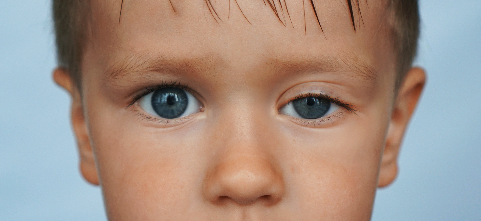
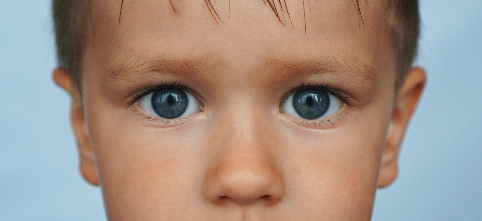
Move the bar left and right
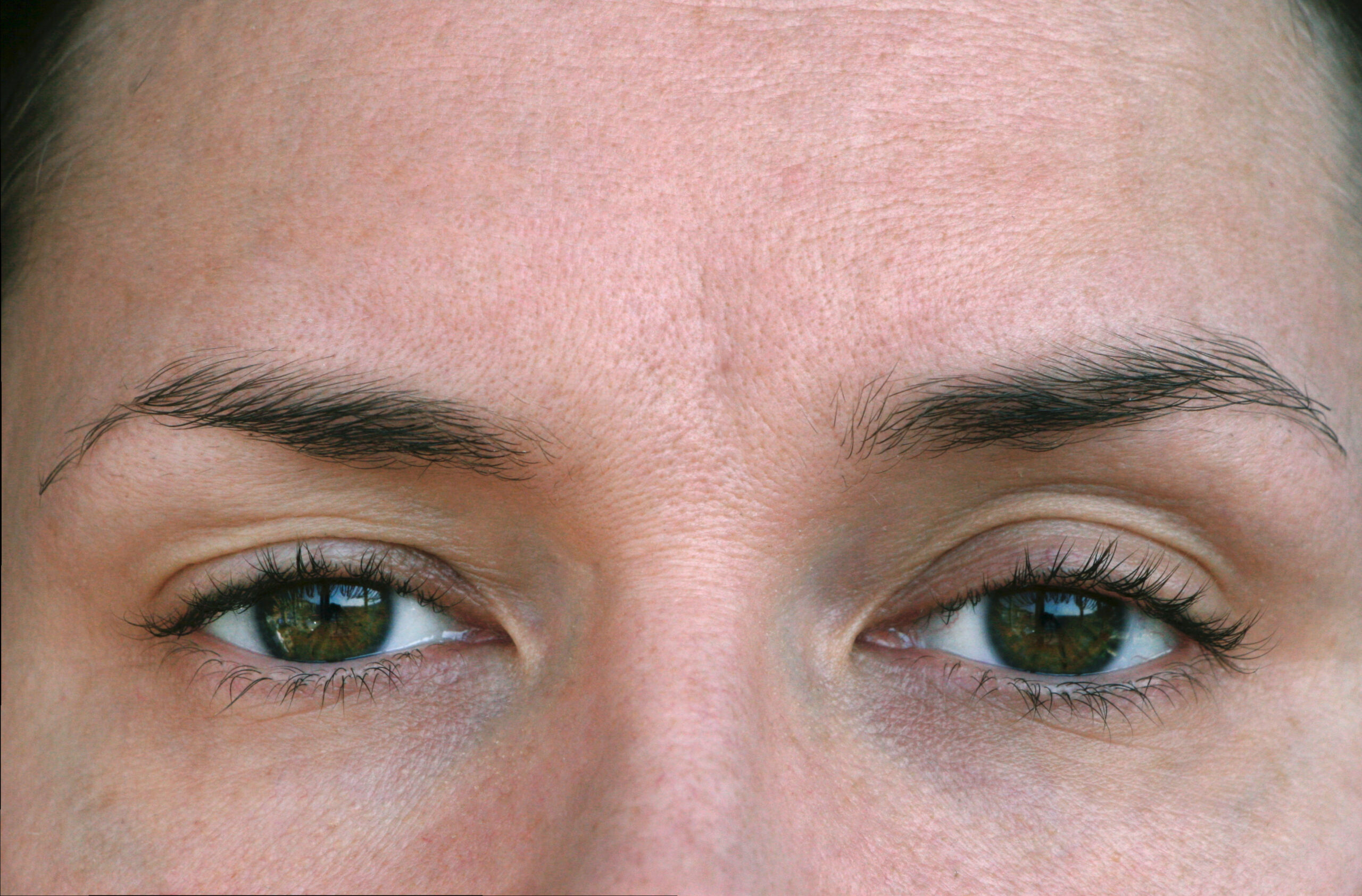
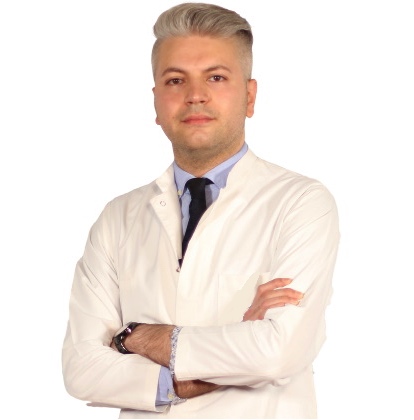
Education Information
He completed primary, secondary and high school in Baku. Dr. Alim Huseynov graduated from Azerbaijan Medical Faculty in 2010. Then he completed his ophthalmology residency in Baku National Ophthalmology Center Azerbaijan . Dr. Alim Huseynov was entitled to receive the Presidential Scholarship of the Republic of Azerbaijan in 2014, and completed the equivalence of specialization in Turkey in the Department of Ophthalmology, Faculty of Medicine, Selcuk University in 2014-2018, and worked as a research assistant and ophthalmologist at the university until 2018. He worked as an Ophthalmologist at Private LIV Hospital Nation between 2019-2022.
Work experience:
- Selcuk University Faculty of Medicine
- Private LIV Hospital Ulus
Certificates, Memberships, Scientific Research:
- Peroperative developing choroidal detachment and its management.
- Surgical Approach in Posterior Polar Cataract.
- Iatrogenic retinal artery occlusion caused by cosmetic facial autologous fat filler injections.
- Effect of Smoking on Ocular Surface and Corneal Nerves.
- Lupus choroidopathy in a patient with discoid lupus erythematosus.
- Endophthalmitis and its treatment with early parsplanavitrectomy.
- Turkish Ophthalmology Association.
Specialized Treatments and Surgeries:
- Retractive Laser Eye Surgery: iLASIK (Femto Lasik), LASIK, LASEK, Trans Epithelial PRK (NO TOUCH) and SMILE
- Cataract Surgery (Smart Lens Surgery)
- Keratoconus Treatments – Cross-Linking Surgeries
- Pterygium Surgery
- Dry Eye Disease and Treatments
- Strabismus Surgery
- Glaucoma- Glaucoma Eye Pressure Treatments
- neuro ophthalmology
- Retinal Diseases Treatments
- Oculoplastic Surgery
- Uveitis Diseases
- Ectropion and entropion surgery – Eyelid deformity treatments
- Enucleation and Evisceration Prosthetic Eye Surgery
Foreign language:
- English
- German
- Russian
- Azerbaijani
- Turkish
Medical University of Selcuk
12 Years of Experience
>8.000 Surgery
Should I go to a Plastic Surgeon or an Oculoplastic Eye Surgeon?
This is the first question you should ask. Blepharoplasty eyelid surgery is a very special field. Aesthetic or general plastic surgeons who have not study Oculoplastic Specialist training should not be preferred for aesthetic eyelid surgeries. Since all functional surgery of the eyelids is considered to be performed by eye surgeons who are best trained in eye surgery, such surgeries are performed by eye surgeons who are experts in Oculoplastic Surgery at Smart Laser Eye Centers.
Although many aesthetic or plastic surgeons are proficient in performing blepharoplasty eyelid surgery, they do not have ophthalmology training and cannot examine the eye, understand eye diseases, predict eye problems that may affect the surgical plan, or be expected to detect complications. We recommend that you evaluate the academic expertise of the surgeon you choose before having eye blepharoplasty surgery.
Definitely avoid low-cost Blepharoplasty Surgery
You may think that a cheap Blepharoplasty surgery is right for you. This might be fine if you're buying a cheap TV, but it's not worth the gamble with your eyesight. But as you know, having cheap eye surgery means sacrificing technology, physician quality, medical care and sterile conditions, and most importantly, taking risks. The issues that fall on a patient who wants to have cataract surgery and should pay the most attention; The hospital with the latest technology in cataract surgery and imaging devices, a sterile environment, and an experienced doctor and clinical team should be selected. We would like to remind all our patients that they only have two eyes and that the most important and most sensitive sense organ is their eyes.
None of these things are more important than your eye health, and we do not compromise on quality and cutting-edge technology. We offer you our prices in a very understandable, fair and affordable way.
There are no hidden costs in our pricing. We make Blepharoplasty Surgery affordable for you.
